Mass graves. Dismembered corpses. Entire towns besieged. Macabre visions grow in depravity as the drug war in Mexico drags on. Since President Felipe Calderon began using the army to contain the violence four years ago, rival gangs have escalated their turf battles over smuggling routes, and 35,000 lives have been lost, half of those in just the three northern states of Chihuahua, Tamaulipas and Sinaloa. The drug criminals have expanded their shadow by intimidating police forces, using kidnapping and extortion, trafficking migrants, and even pirating oil from Mexico's national oil company, Pemex. Of course, calling this issue "Mexico's drug war" is inadequate. Much of the drug product is destined for the United States, and by some estimates, over $20 billion flows south annually to pay for it. Guns made in the U.S. cross the border as well. The last 16 pictures in this entry were made by Nadav Neuhaus, who was gracious enough to share them with us. Neuhaus spent two years visiting Mexico documenting the drug war. You can see more of his work by clicking on the link below. -- Lane Turner (36 photos total)

Students and activists gather during a protest against Mexico's drug violence in Mexico City February 17.

Morgue employees take a body, found on Wednesday in a mass grave, from a refrigerated truck into the local morgue in Matamoros April 7. Security forces following reports of abducted passengers in violent Tamaulipas state bordering Texas stumbled on a collection of pits holding a total of 59 bodies, not far from a ranch where 72 Central and South Americans were executed late last year by drug gangs preying on migrants travelling north through Mexico. 
People walk past symbolic chalk outlines during an April 6 march in Cuernavaca called out by poet Javier Sicilia after the death of his son, whose body was found along with six other dead inside a car a week ago in Cuernavaca. Nationwide protests against Mexican President Felipe Calderon's war on drug cartels that has claimed more than 37,000 lives since late 2006 were planned all over Mexico and in cities as far afield as Buenos Aires, Paris, New York and Barcelona. 
Mexican soldiers guard an arsenal in Cuitlhauac on March 14. Mexican soldiers found the arsenal and a training camp in the state of Veracruz. The site had trenches and an arsenal composed of 12,344 cartridge of different calibers, 191 magazines, 28 grenades, over a dozen guns, including AK- 47. 
Members of the Colombian Navy stand guard on top of a seized submarine built by drug smugglers in a makeshift shipyard in Timbiqui, Colombia February 14. Colombian authorities said the submersible craft was to be used to transport eight tons of cocaine illegally into Mexico. 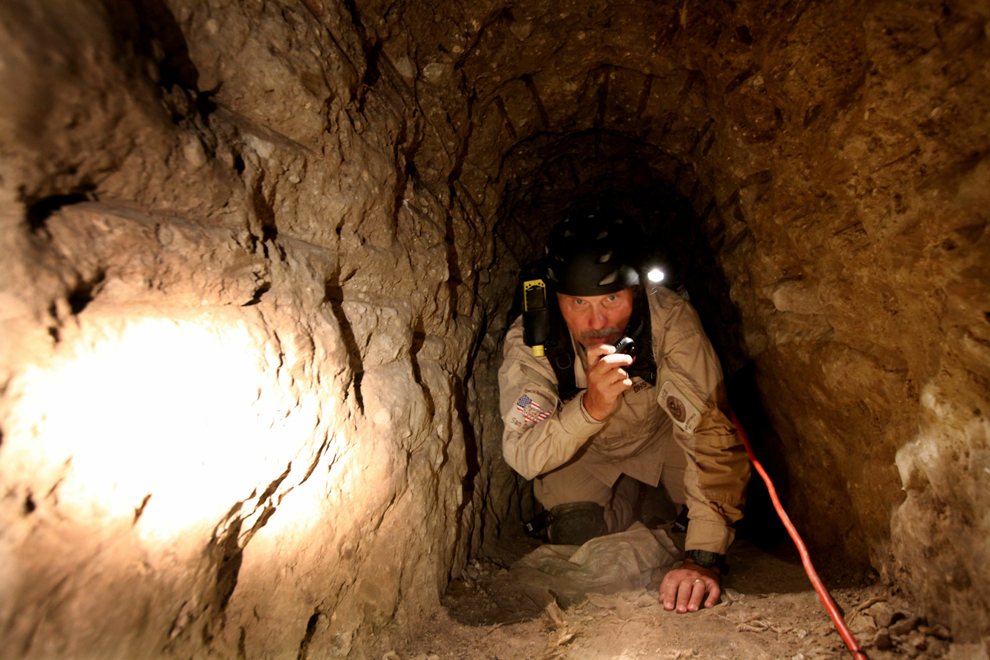
A Homeland Security Special Agent crawls through a drug tunnel found at a warehouse near the US-Mexico border November 4, 2010. Authorities confiscated over 30 tons of Marijuana in the tunnel, which connected to a warehouse in Tijuana. 
Suspects stand next to containers filled with crystal meth and chemicals during a presentation to the press in Tijuana Feb. 12. According to the Baja California State police, nine suspects were arrested during an operation to shut down a crystal meth lab and they claimed to work for the "La Familia" drug cartel. 
Police and journalists look at the body of a dead man hanging from a bridge in Morelia March 17. The man had a sign around his neck reading "We killed him because he was a robber and a kidnapper", which was signed by "The Knights of the Order of the Temple", according to local media. 
A member of the Federal Police looks at a dismembered corpse in Acapulco on February 20, which was found near a burnt car beside four people who were gunned down in apparent drug-related killings.
Twenty-year-old Marisol Valles Garcia sits at her desk after her swearing-in ceremony as the new police chief of the border town of Praxedis G. Guerrero, Mexico October 20, 2010. Valles Garcia, who made international headlines when she accepted the job as police chief in a violent Mexican border town was later fired for apparently abandoning her post after receiving death threats. 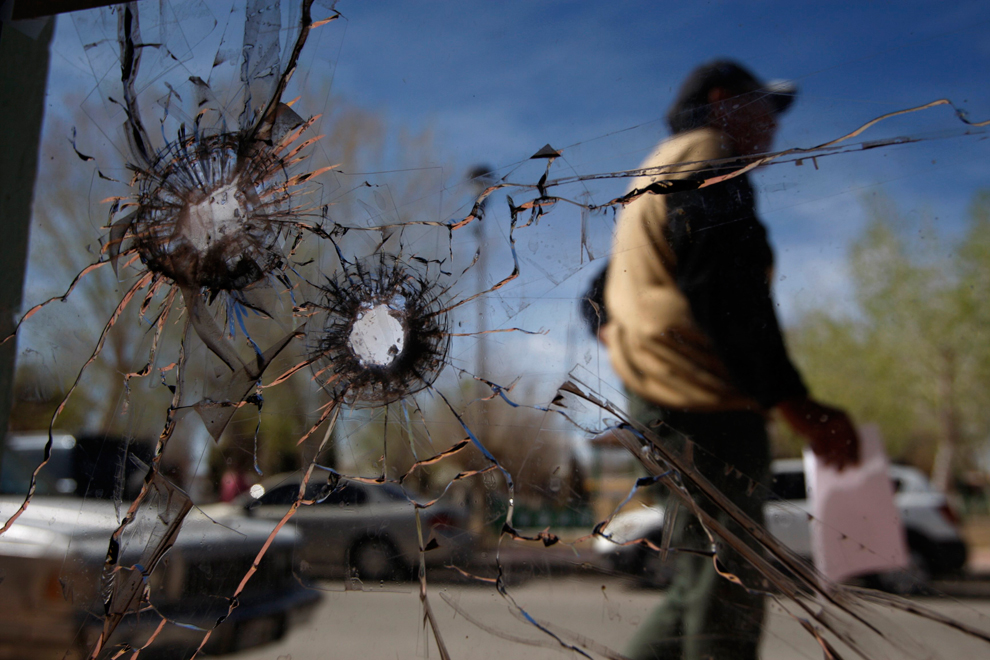
Bullet holes riddle the police headquarters where Marisol Valles Garcia used to work as the police chief, in Praxedis G. Guerrero March 7. Marisol Valles, a criminology student in Mexico's violent city of Ciudad Juarez, took charge of the police force in the neighboring municipality after few candidates dared to apply for the dangerous job. 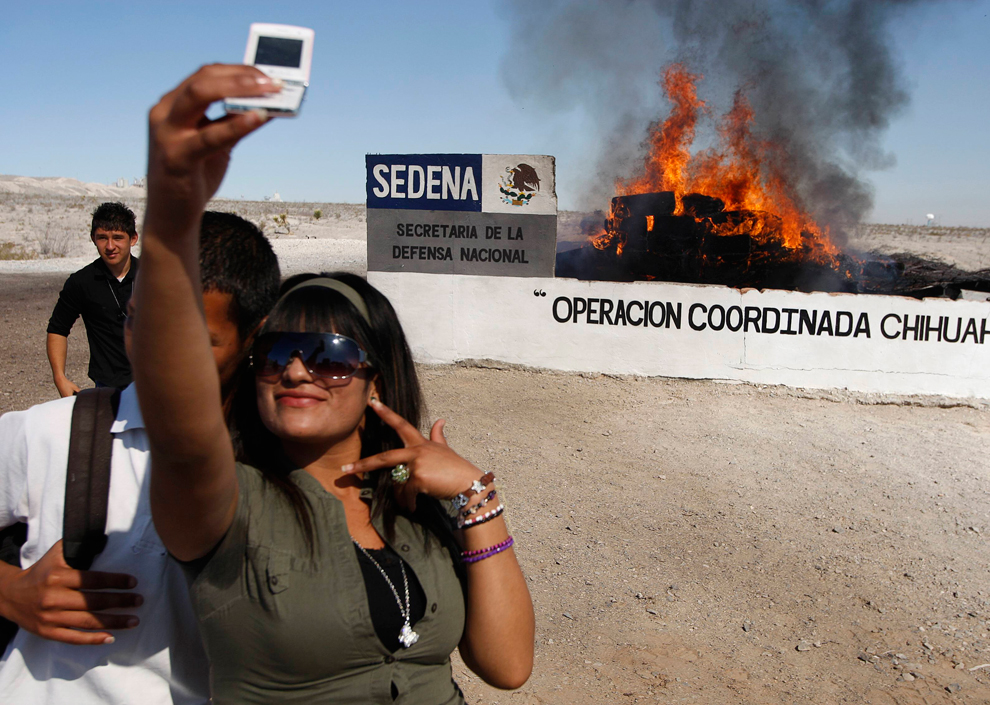
Students take pictures of themselves as marijuana and other drugs are incinerated at a military base in Ciudad Juarez March 2. According to local media, the students were invited to see how 1500 kg of drugs, seized in several operations throughout the last months, were destroyed. 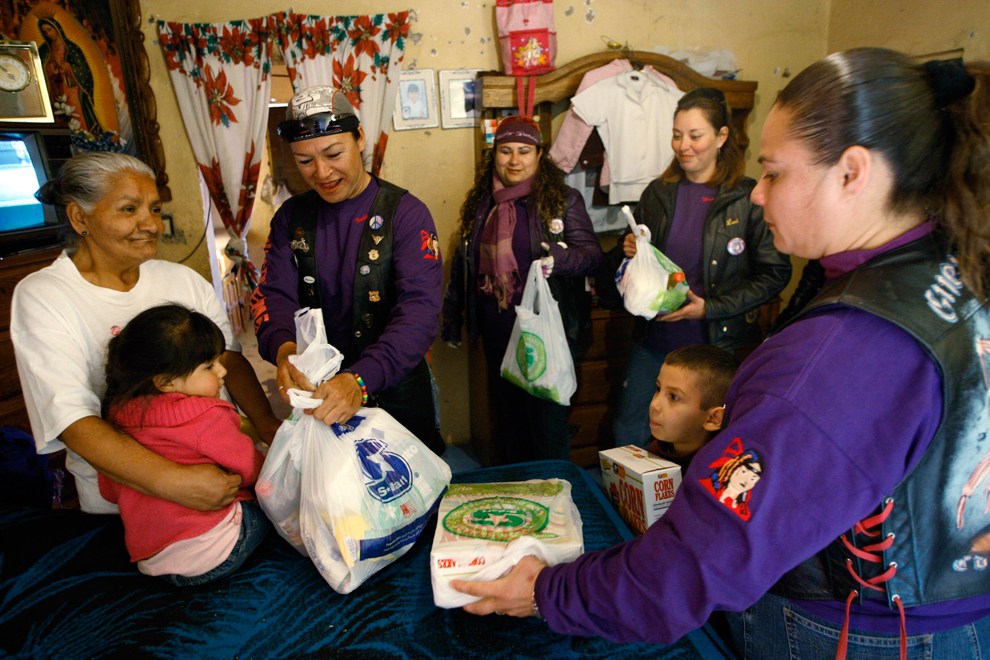
The "Female Warriors" hand out aid in a low-income neighborhood in Ciudad Juarez January 23. The women ride pink motorbikes and hand out food and medicines to the poor in one of the world's deadliest cities to protest the deprivation they say fuels much of the violence. Braving drug gang wars, the self-dubbed Female Warriors ride out every Sunday to barrios that ring the factory city across from El Paso, Texas. 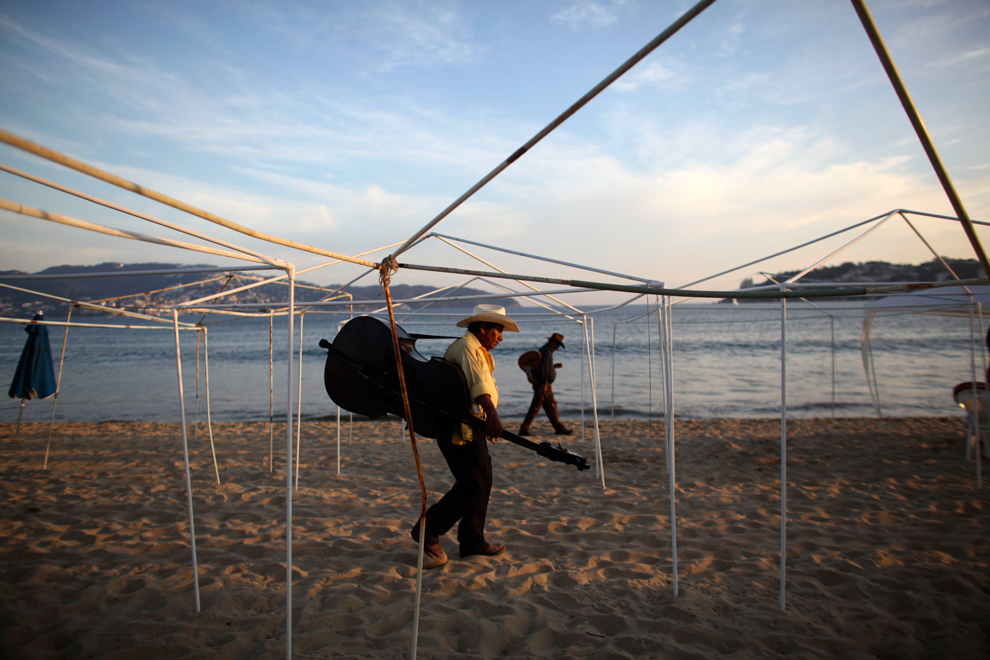
Musicians look for clients willing to pay for a song at an empty Papagayo beach in Acapulco January 15. Once a glamorous beach mecca for international tourism, Acapulco's image has steadily deteriorated as a fierce turf war continues between rival drug gangs.
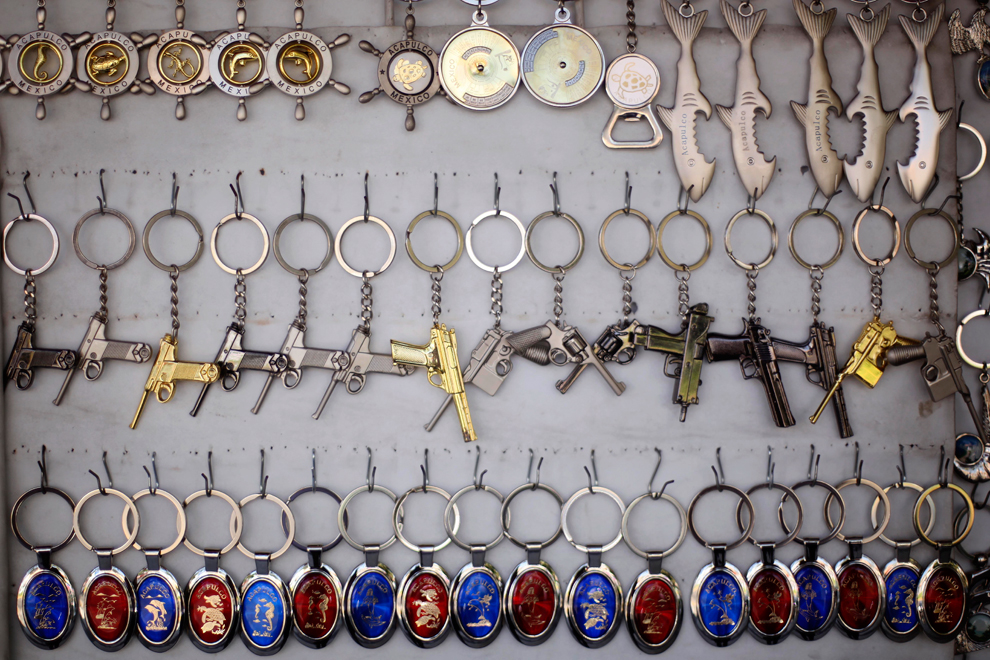
Key chains are displayed at a souvenir shop in Acapulco January 28.
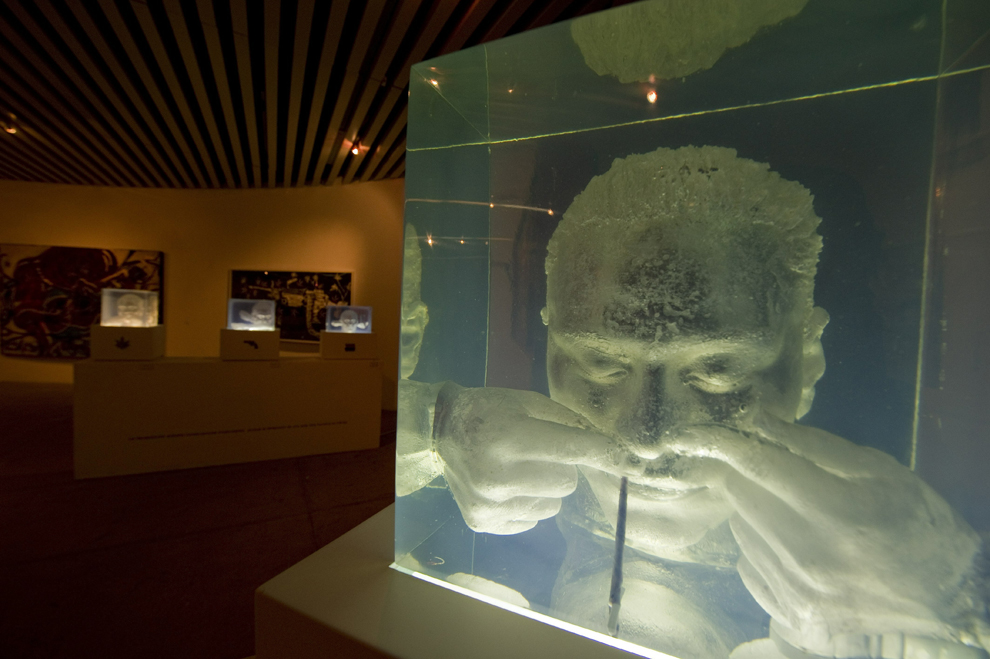
"Cocaine Addict" by Mexican artist Emiliano Gironella is displayed at his exhibition "Mexico al Filo" (Mexico to the Edge), at the Universidad Iberoamericana, in Mexico City, on January 28. The exhibition shows art related to the drug-trafficking world and the violence it is generating in Mexico. 
A municipal policeman caps a container of his own urine during a drug test in Guadalupe February 21. Some 550 policemen will take part in this test after two were detained by soldiers late Sunday on suspicion of being linked to organized crime, according to local media. 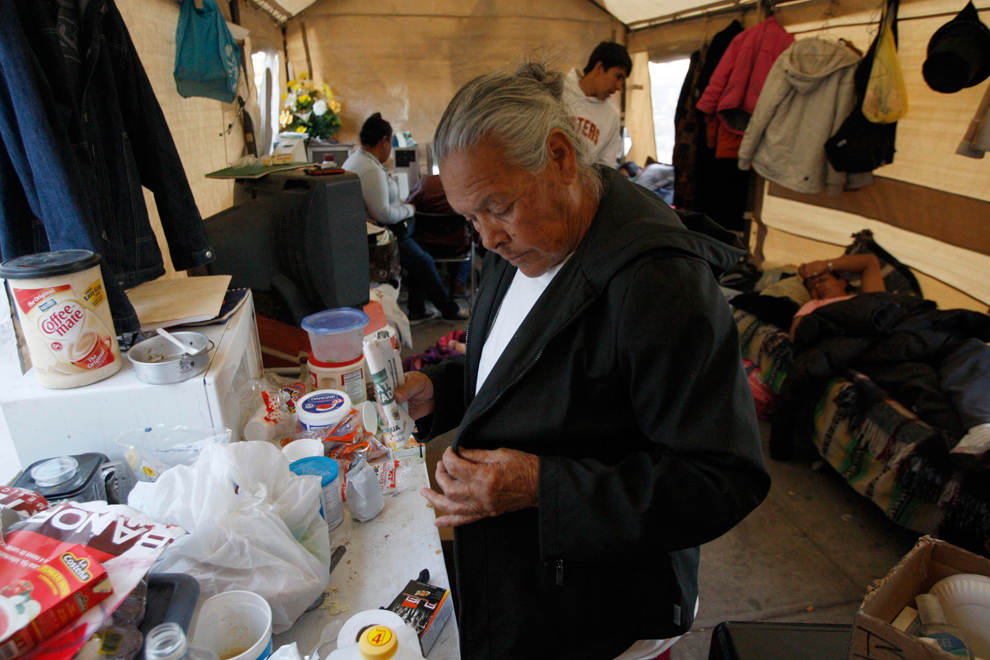
Sara Reyes stands inside the tent she shares with family members outside the prosecutor's office in Ciudad Juarez March 2. Two children and a grandson of Reyes were murdered last year after accusing the army of rights violations in President Felipe Calderon's army crackdown on drug gangs in the city. Gunmen dumped the bodies of three members of the Reyes family outside Ciudad Juarez in February, days after burning down the Reyes' family home. 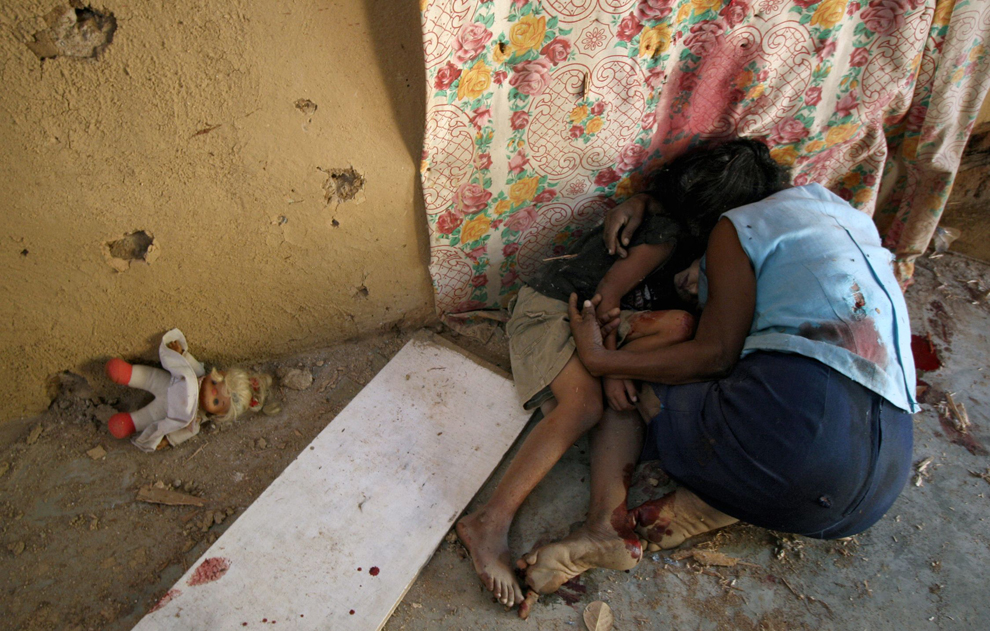
The corpses of a woman and her granddaughter lie on the floor after being shot by gunmen in Acapulco March 15. Another granddaughter was also killed in the assault.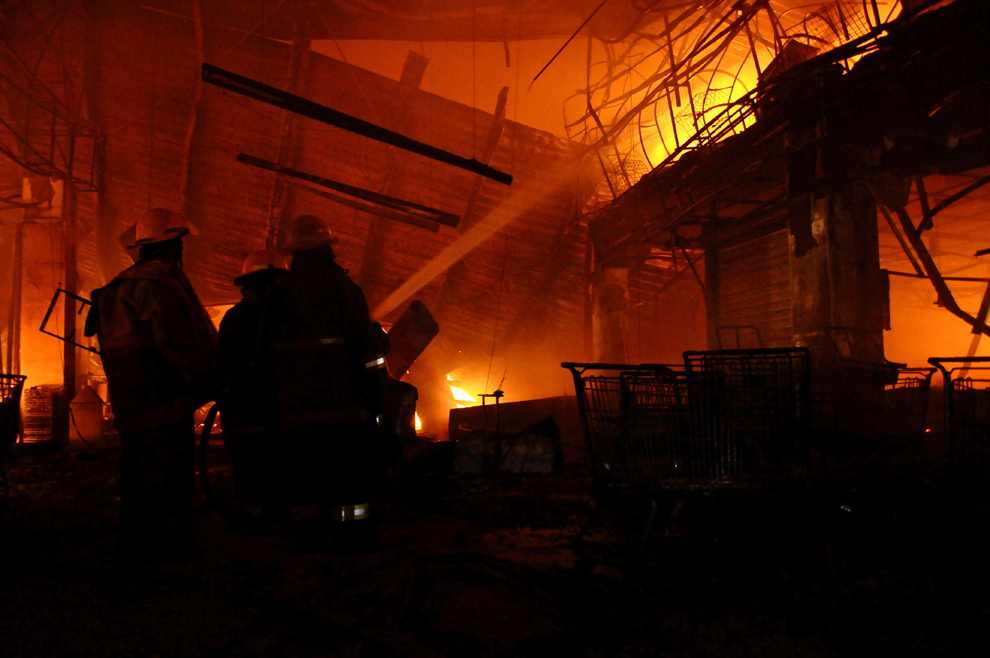
Firefighters work to put out a fire at a supermarket after a gun battle between soldiers and gunmen in Acapulco April 4. The Public Safety Department in Guerrero state said a soldier and two gunmen were killed in the clash that also destroyed a supermarket, a movie complex and stores in a shopping center. 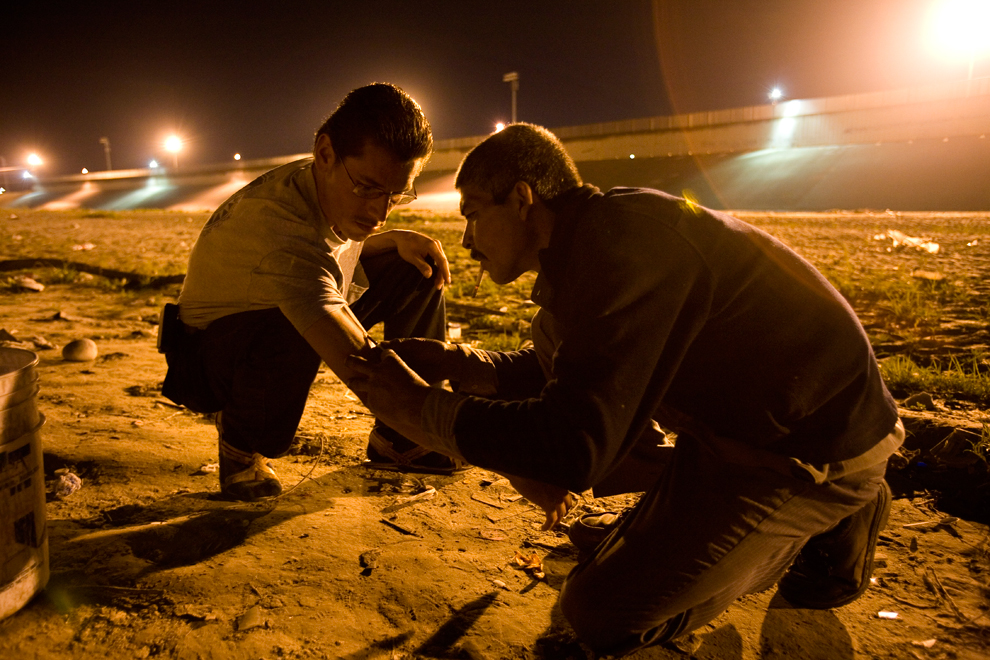
Drug users shoot heroin next to the Mexican-U.S. border, where drugs are both cheap and accessible, March 8, 2009. 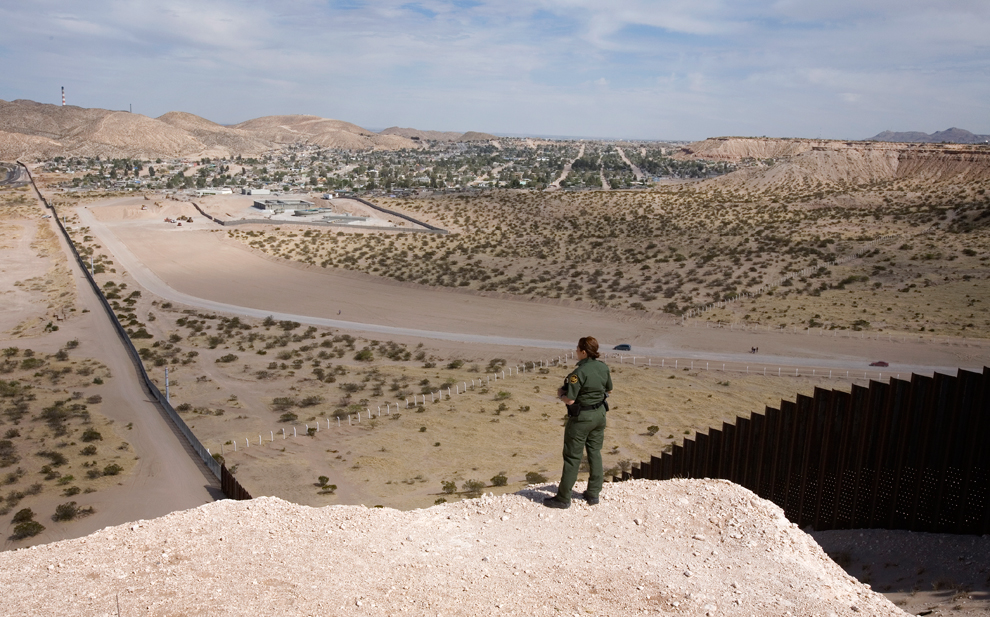
Karla Johnson looks at the border between the U.S. and Mexico near El- Paso and the Mexican city of Juarez April 6, 2009. 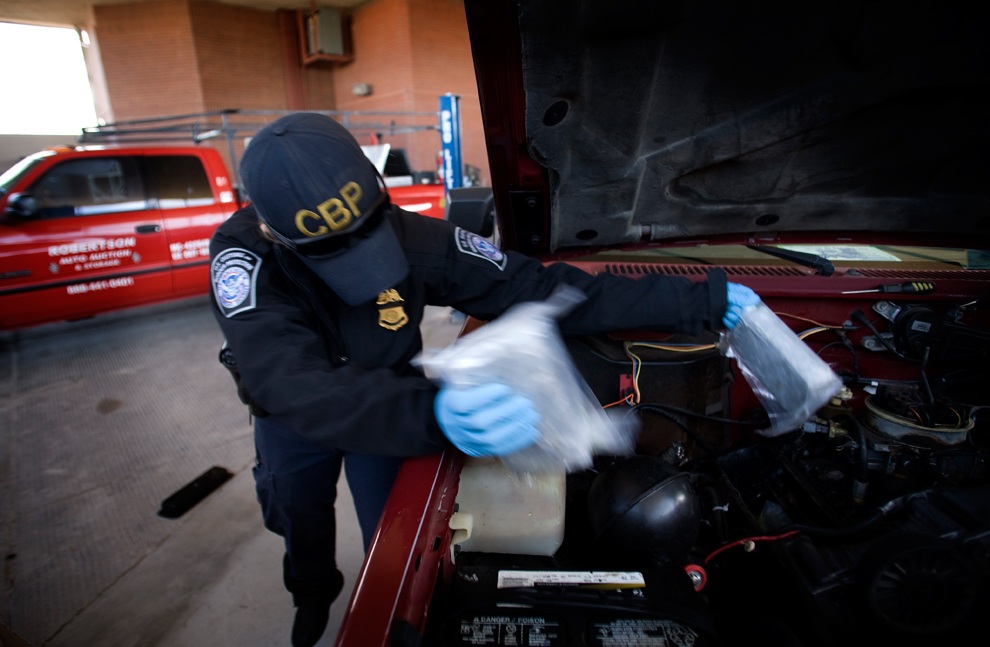
An officer from the U.S. Customs and Border Protection finds packs of drugs hidden in the engine of a pickup truck traveling from Juarez December 22, 2008.
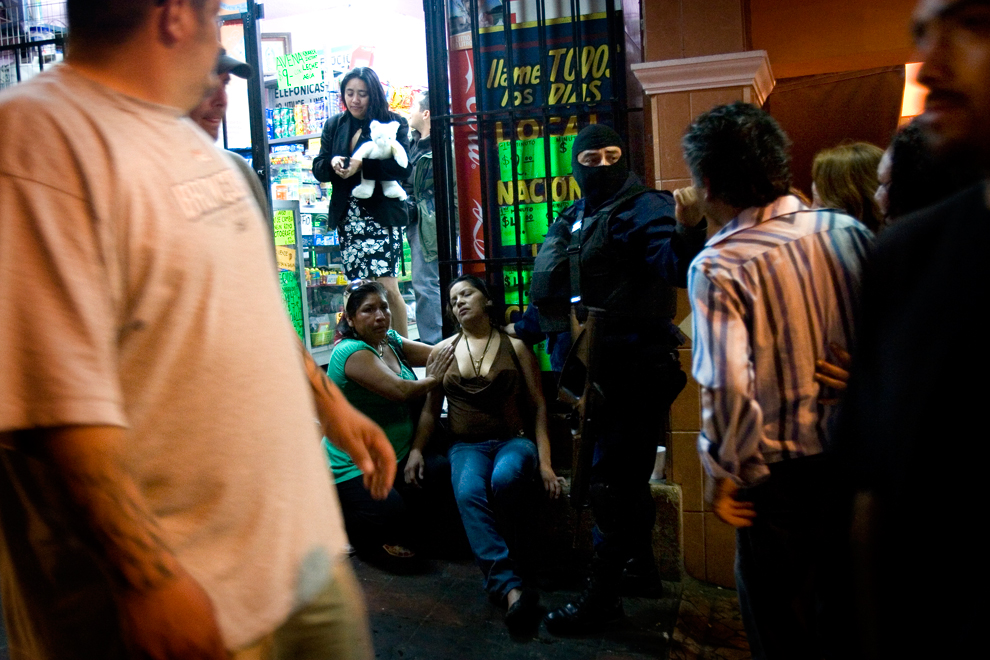
A night operation by Tijuana's Special Tactics Unit checks cars and people for cocaine and narcotics March 9, 2009.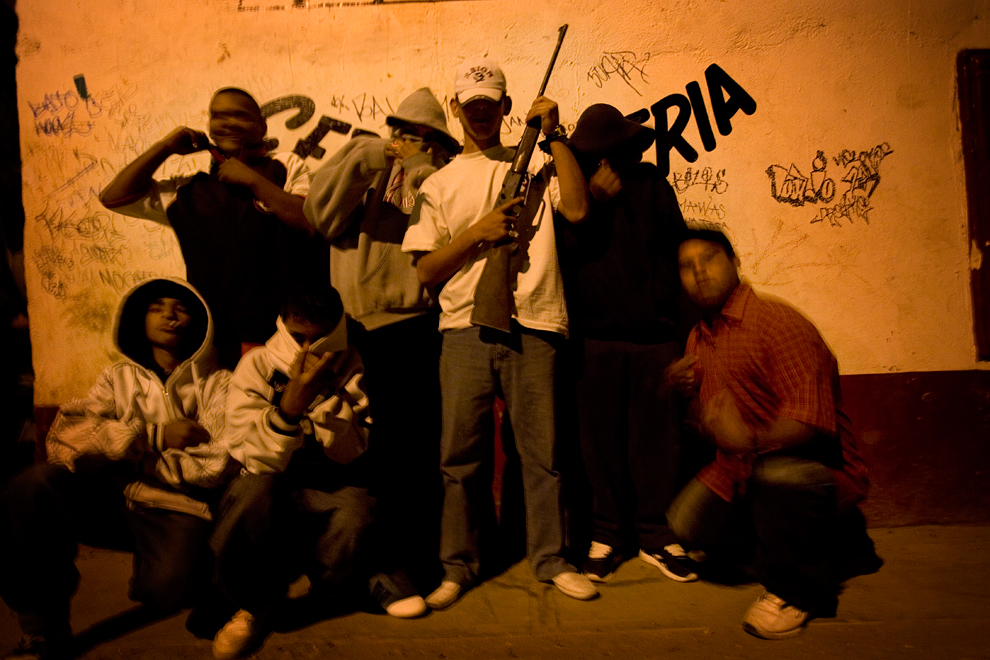
Roberto, aka "Poncho", the leader of Juarez's Baja 13 gang, poses with gang members March 26, 2009. 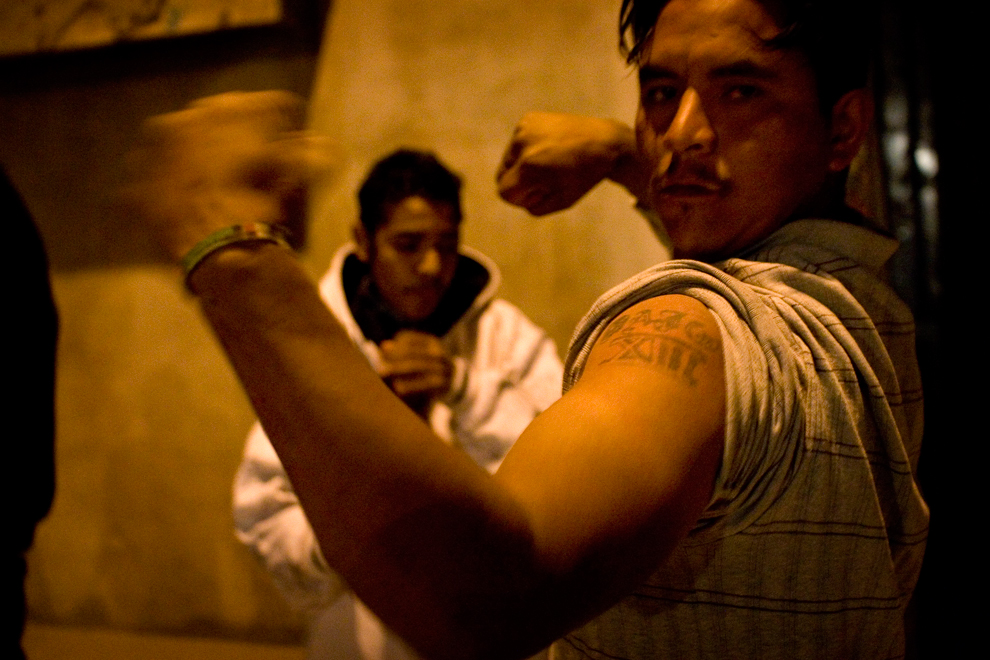
Members of Juarez's Baja 13 gang pose April 5, 2009. 
Federal police officers take a suspect into custody in connection with a shooting in Tijuana March 9, 2009. 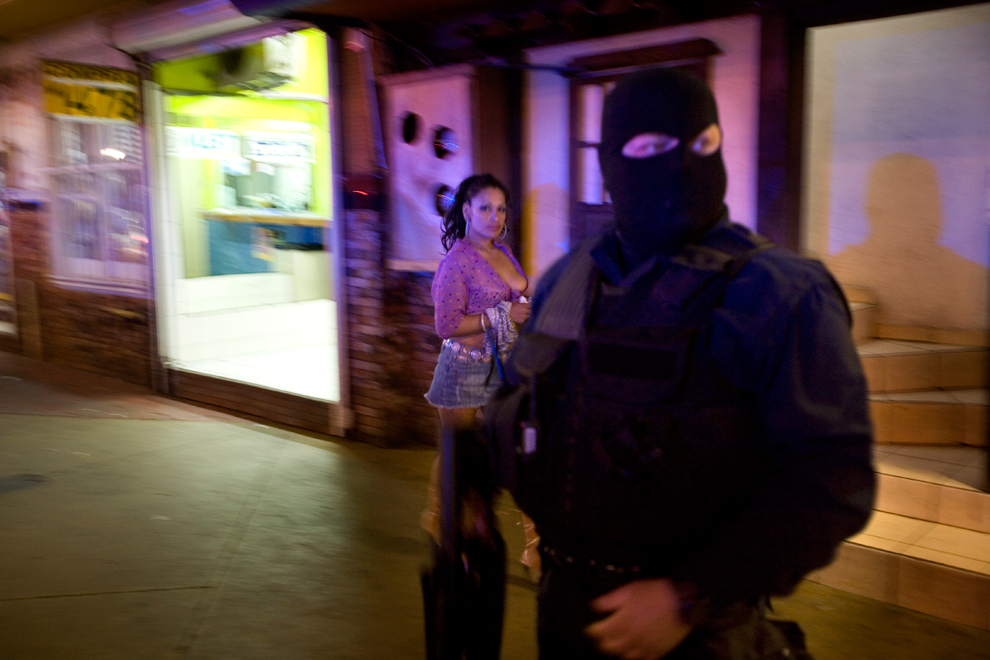
Night falls on Tijuana March 9, 2009. 
After an assassination in the city of Juarez, federal police and local police close the area and secure it December 20, 2008. 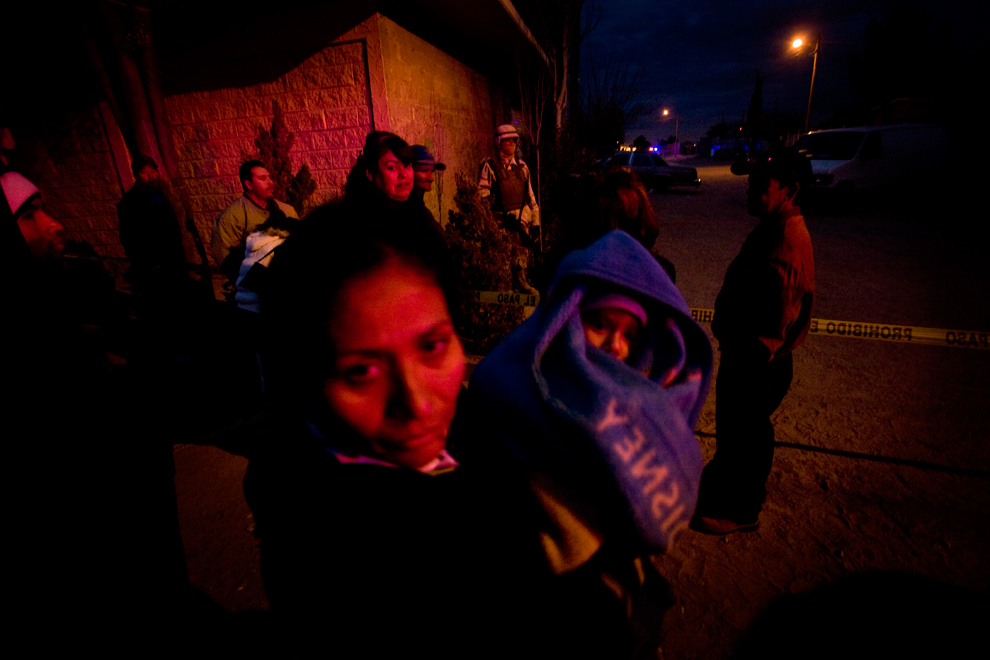
A crowd gathers near murder scene in Ciudad Juarez December 19, 2008. 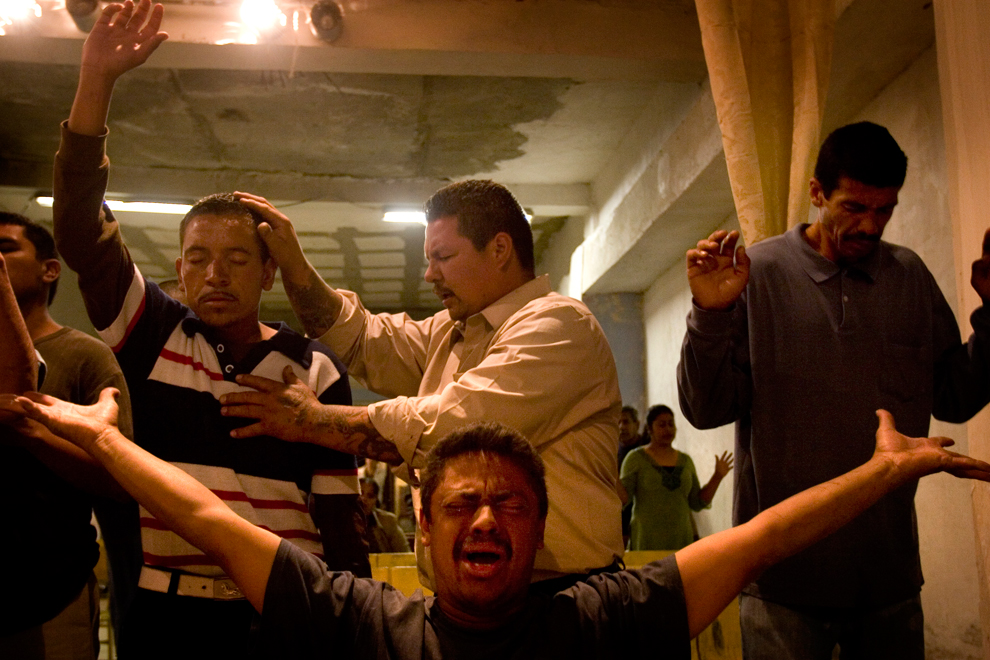
Pedro Martin Nunez (center, in white shirt), an ex-convict, former gang member, and confessed killer, conducts a service in the Juarez Christian church where he is now a minister March 29, 2009. 
A girl stands outside looking into her rented apartment house after someone riddled the house with bullets March 6, 2009. Drug cartel members were trying to send a message to the owner of the house.
A man digs the grave for the funeral of a Mexican policeman murdered in Juarez by members of a drug cartel, December 18, 2008. 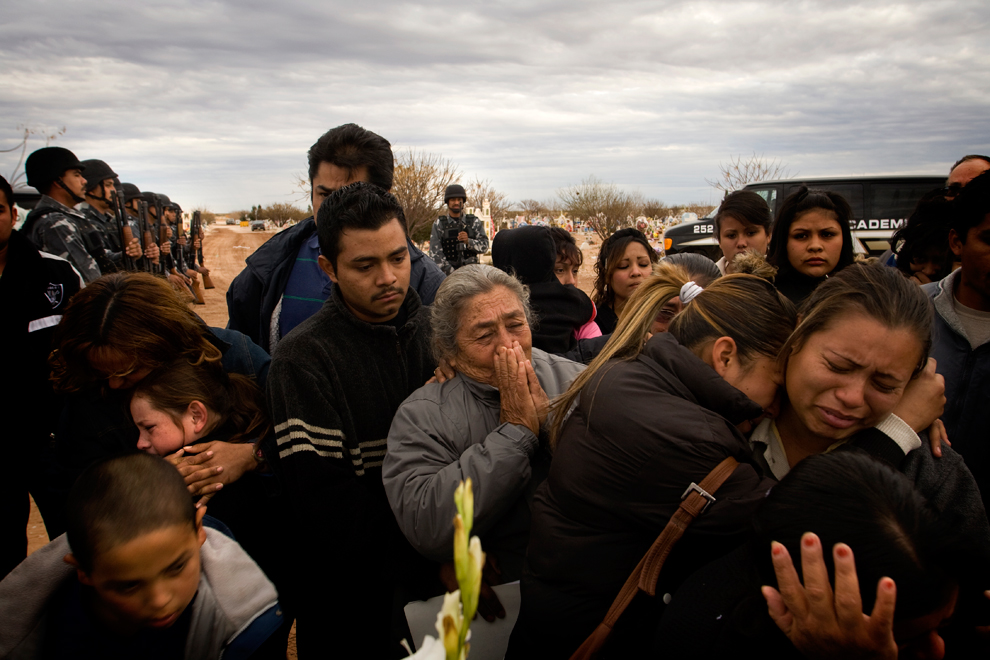
Mourners grieve at the funeral of a Mexican policeman murdered in Juarez by members of a drug cartel, December 18, 2008. 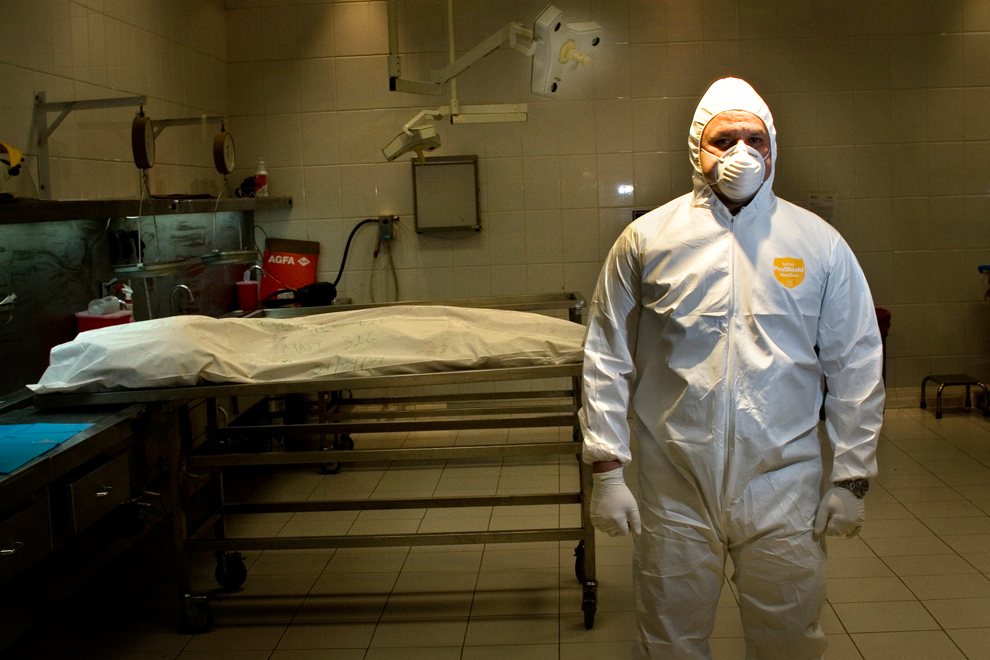
Hector Hawley Morelos, Director of the Crime Investigation Center in Juarez, poses for a portrait in the morgue April 3, 2009. 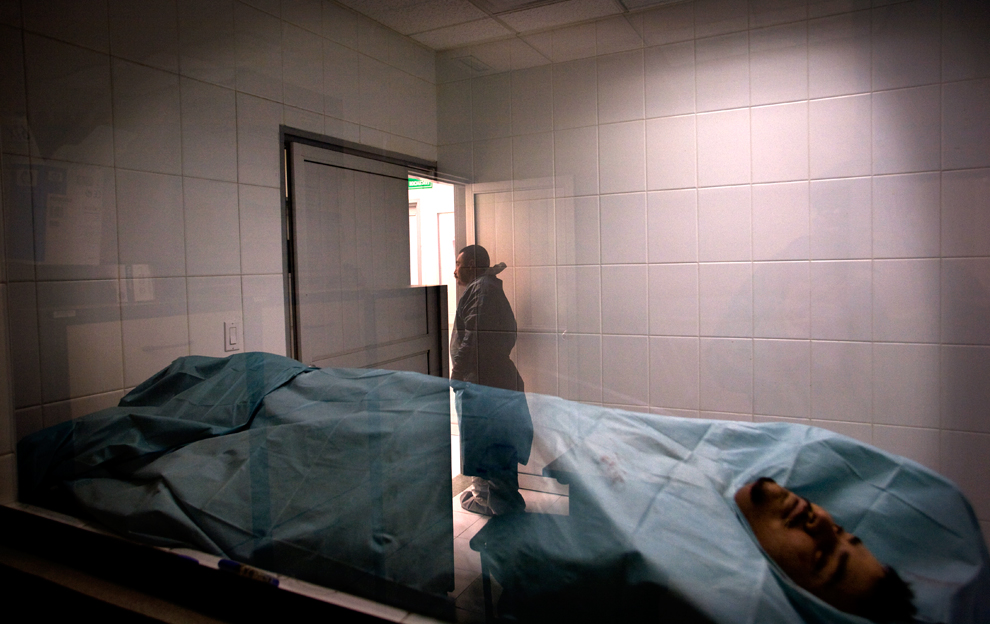
A view of the morgue in the city of Juarez on December 20, 2008.




































No comments:
Post a Comment